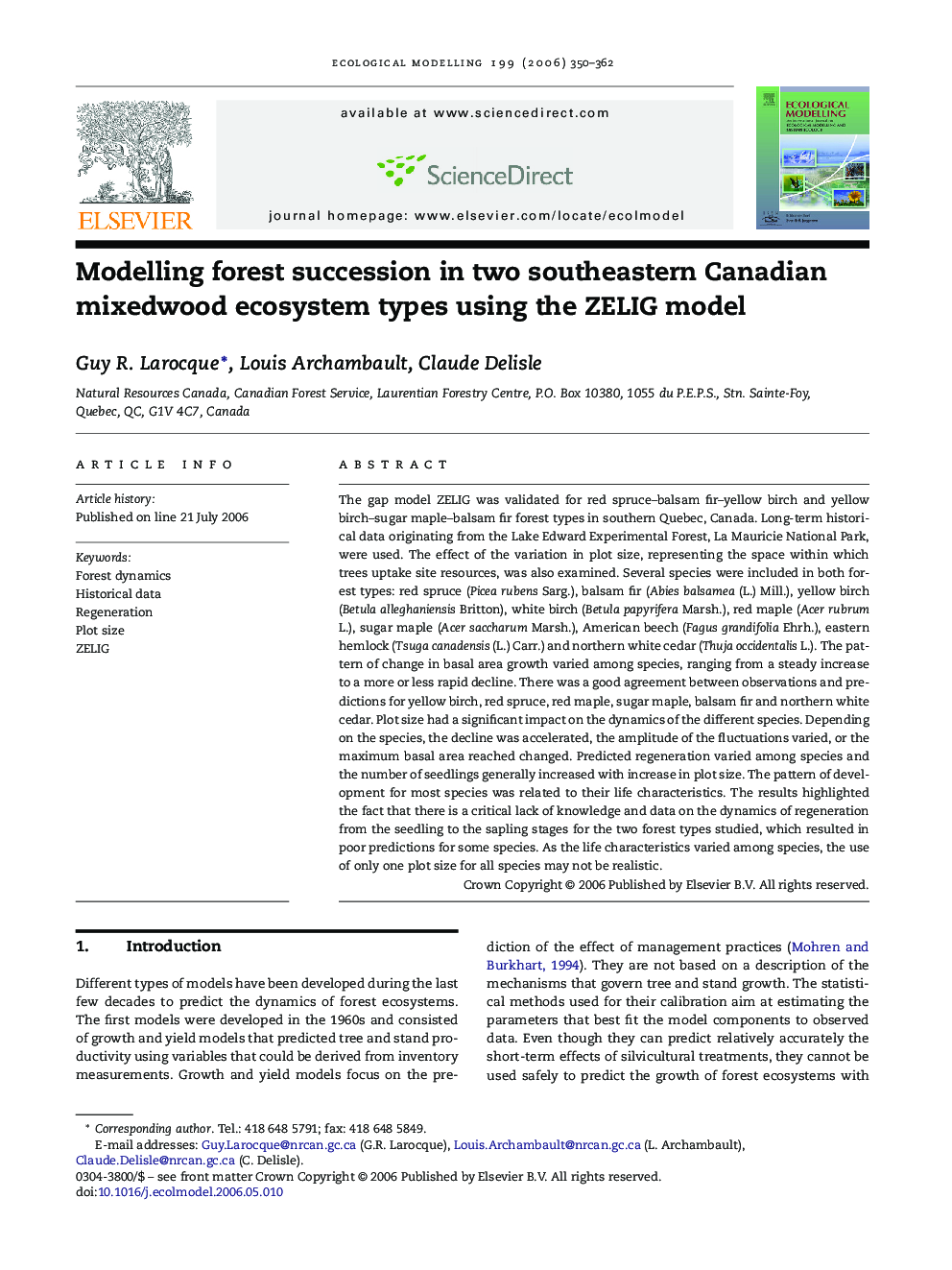| کد مقاله | کد نشریه | سال انتشار | مقاله انگلیسی | نسخه تمام متن |
|---|---|---|---|---|
| 4378953 | 1303500 | 2006 | 13 صفحه PDF | دانلود رایگان |

The gap model ZELIG was validated for red spruce–balsam fir–yellow birch and yellow birch–sugar maple–balsam fir forest types in southern Quebec, Canada. Long-term historical data originating from the Lake Edward Experimental Forest, La Mauricie National Park, were used. The effect of the variation in plot size, representing the space within which trees uptake site resources, was also examined. Several species were included in both forest types: red spruce (Picea rubens Sarg.), balsam fir (Abies balsamea (L.) Mill.), yellow birch (Betula alleghaniensis Britton), white birch (Betula papyrifera Marsh.), red maple (Acer rubrum L.), sugar maple (Acer saccharum Marsh.), American beech (Fagus grandifolia Ehrh.), eastern hemlock (Tsuga canadensis (L.) Carr.) and northern white cedar (Thuja occidentalis L.). The pattern of change in basal area growth varied among species, ranging from a steady increase to a more or less rapid decline. There was a good agreement between observations and predictions for yellow birch, red spruce, red maple, sugar maple, balsam fir and northern white cedar. Plot size had a significant impact on the dynamics of the different species. Depending on the species, the decline was accelerated, the amplitude of the fluctuations varied, or the maximum basal area reached changed. Predicted regeneration varied among species and the number of seedlings generally increased with increase in plot size. The pattern of development for most species was related to their life characteristics. The results highlighted the fact that there is a critical lack of knowledge and data on the dynamics of regeneration from the seedling to the sapling stages for the two forest types studied, which resulted in poor predictions for some species. As the life characteristics varied among species, the use of only one plot size for all species may not be realistic.
Journal: Ecological Modelling - Volume 199, Issue 3, 1 December 2006, Pages 350–362